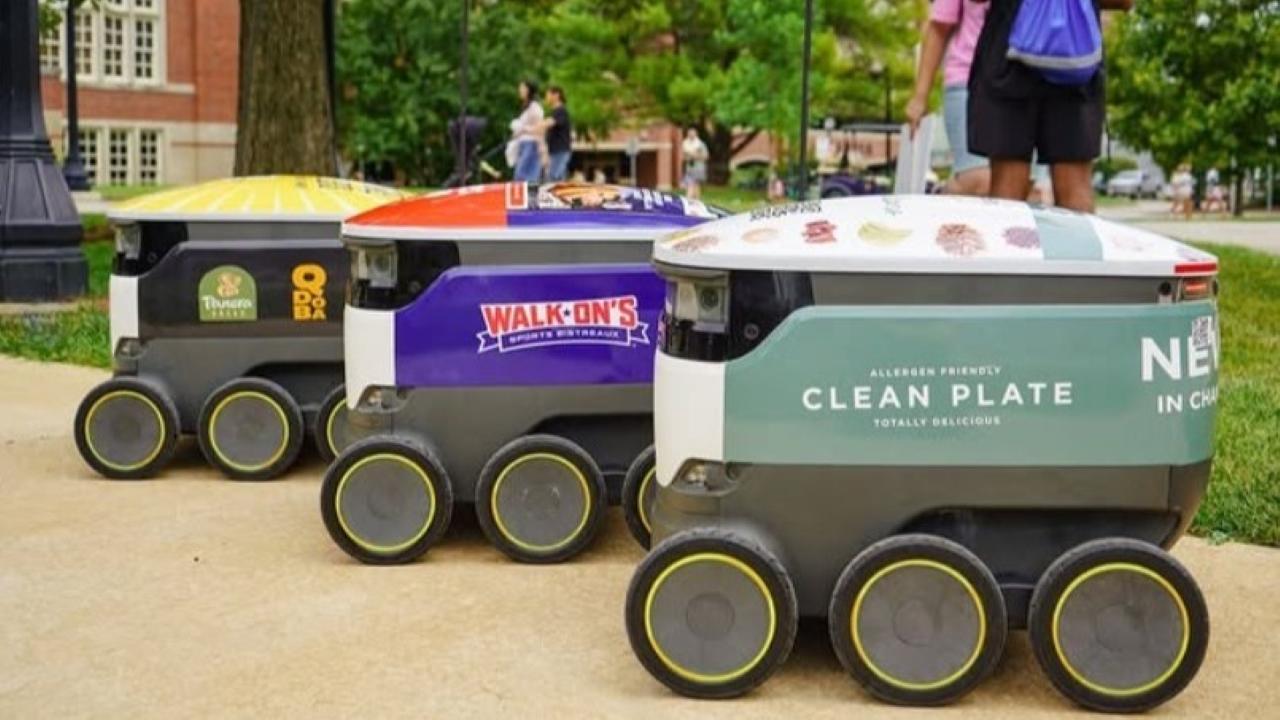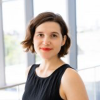A Purdue Polytechnic graduate course is partnering with the West Lafayette campus’ own emergency preparedness team to reimagine the role of the university’s ubiquitous Starship delivery robots, pushing them beyond food delivery to tackle challenges such as weather assessment and keeping robots out of spaces they shouldn’t be.
The collaboration is the latest evolution of a project led by Anastasia Kouvaras Ostrowski, an assistant professor in the School of Applied and Creative Computing with a courtesy appointment in the School of Mechanical Engineering, whose research focuses on human-robot interaction and design. The project connects graduate students directly with Jefferson Howells and Jason Philhower of Purdue’s Emergency Preparedness department, who serve as real-world clients for the class.
"You don't see robots in a lot of places just in the wild, long-term deployed, and accepted as part of the community," Kouvaras Ostrowski said, explaining why the Starship fleet is a unique learning tool. "Having a system where students can get out of the classroom and experience these technologies in the real world is such a unique opportunity."
For Howells, who helps manage the safety of Purdue’s 2,600-acre campus, the fleet of more than 60 robots represents a massive, untapped mobile sensor network.
"It's a way to take something that's pretty much everywhere on campus and have it functional not only as an information source, but kind of like a situational awareness tool," Howells said. "What may just seem like raw data to that device is actionable from a public safety standpoint."
This semester, students are working on two specific challenges developed with the emergency preparedness team. The first is to explore how the robots could be used for weather assessment and damage mitigation in the case of extreme weather events.
"When I'm in our emergency operations center, I have people, as well as expensive fire trucks and police vehicles that would have to go into harm's way to get some of that data," Howells explained. He envisions possibilities for the robots to provide information about everything from icy sidewalks (by gauging wheel slippage) or identify fallen tree branches blocking pathways after a storm.
The second challenge addresses situations where the robots’ geofencing may be insufficient for their normal operation. Circumstances where Starship robots may need to be “locked out” of certain parts of campus include water main breaks, or when large events such as football games runs past their scheduled time. "How do you keep the robots out of places they're not supposed to go?" Kouvaras Ostrowski asked. "Caution tape, for example—these robots may not recognize it and they can go right under it."
The project is co-taught by Nancy Rasche, a professor of practice in UX design, who emphasized the value of working with a real client.
"Student motivation is always a little higher when they're working with somebody who is a professional who's working in practice," Rasche said. "They provide the vision for the project, and then they support that. They know what it's like in the industry in this area, much more than I will ever know, much more than students will ever know."
The collaboration builds on Kouvaras Ostrowski's previous research and prior iterations of the class project. She found that with, a specific client, students are more readily able to move past the robots' primary function and the status quo features for how they are used on campus. "Some students can be very fixated on the delivery function of the robots," she said. “This year's partnership is designed to push them to think creatively about the functions of these really complex robots.”
Rasche noted that Kouvaras Ostrowski's unique background in human-robot interaction was the key to elevating the project. "You're seeing her take it many steps up, which I would not have been able to do," Rasche said. "Because she has that background... she was able to do that and to put the effort in to make sure that it aligns with these new initiatives to get the students excited."
As Kouvaras Ostrowski’s projects with the Starship robots have advanced with time, they have given graduate students greater degrees of hands-on and interdisciplinary experience with a problem-solving ethos. “When you insert any system into a new environment—it could be a chat bot, it can be generative AI—that needs to be considered and thought about,” Kouvaras Ostrowski said. “I think the same way about the Starship robots. It's a socio-technical relationship. You're bringing this technology and you're putting it into a very social world. And it's important to understand how the technologies are going to affect your existing structures, because those structures will be modified by new technology. This is a project that’s designed to consider that integration.”
Additional information


